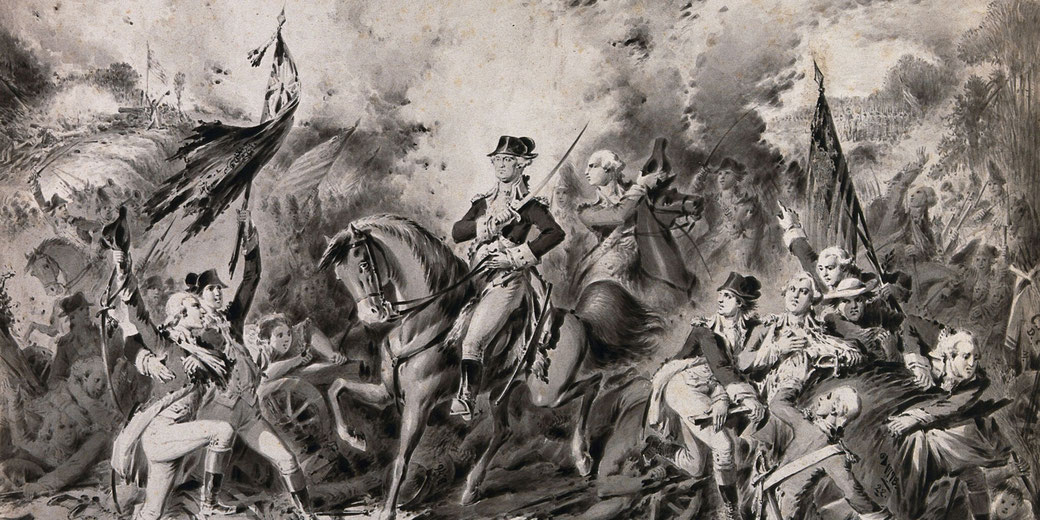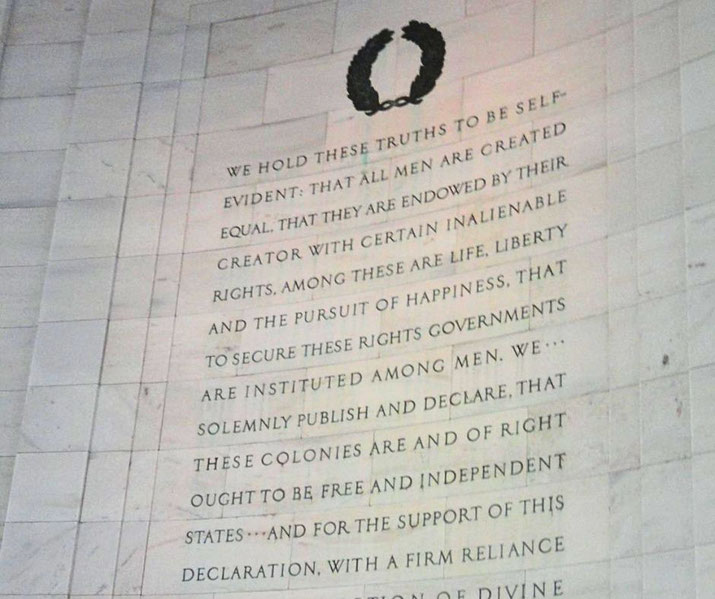How did America win independence from Britain?

The American Revolutionary War began with the first shots fired at Lexington and Concord and ended in the decisive victory at Yorktown.
As a result, the war is often described as a crucible that tested the mettle of the Thirteen Colonies in their quest for independence.
But how did a group of disparate colonies unite against one of the world's most powerful empires?
And ultimately, how did this revolution transform thirteen colonies into the United States of America?
Preparations for war
Following the implementation of the Intolerable Acts, the British parliament ruled that Massachusetts was now under military control of General Thomas Gage, the overall British commander of North America.
Gage was based in Boston and had around 4,000 soldiers under his command.
Aware of the growing resistance in the colonies, he moved to secure the stores of British weapons, cannons and ammunition that were kept in British forts throughout the colonies before they could be seized by the rebels.
In late summer of 1774, Gage moved throughout New England to secure the weapons and gunpowder.
The colonists were slow to mobilise but in December 1774, several hundred of them stormed the British Fort William and Mary in Portsmouth, New Hampshire.
They overwhelmed the small garrison there and were able to take control of a number of cannons and weapons.
Similar resistance movements in other parts of the colonies prevented Gage from securing enough resources to effectively suppress further uprisings and he realised things could soon get out of control.
On the 14th of April 1775, Massachusetts declared that it was in a state of open revolt against the British government.
Gage knew that he had to move quickly to secure the military stocks at the nearby towns of Concord and Lexington.
First Battles
A silversmith called Paul Revere heard about Gage's plan and decided to take the initiative to support the colonists.
On the 18th of April, he was tasked with warning the residents of Lexington and Concord, about 32 km away, about the impending British march.
He set out from Boston, stopped in Lexington to alert Samuel Adams and John Hancock, and intended to continue to Concord.
However, Revere was captured by a British patrol before reaching Concord, although his companions, William Dawes and Dr. Samuel Prescott, continued the mission.
On the same night of the 18th of April, around 700 British troops marched to Lexington, arriving at 5am on the 19th.
They quickly chased the 70 colonial militiamen away and then marched on Concord, arriving just a few hours later.
However, thousands of colonial militiamen had gathered to defend their town and managed to successfully hold off the attack.
Under constant harassment, the British were forced to retreat back to Boston.
Around 273 British and 95 Americans were killed or wounded in these two skirmishes.
Back in London, the parliament appointed Sir William Howe, Sir Henry Clinton, John Burgoyne, and Charles Cornwallis the generals of the British troops and sailed them to North America.
It would be a while before they arrived though.
Meanwhile, in the colonies, the Continental Congress ordered that new troops be recruited and assigned overall command of the Continental Army to George Washington.
Washington was an experienced commander who had fought for the British during the French and Indian War.
An important battle occurred a few months later at Boston on the 17th of June, 1775, which has become known as the Battle of Bunker Hill.
The Americans fortified positions on Breed's Hill (near Bunker Hill) and were then attacked by the British under General Howe.
The colonists were outnumbered and outgunned, but they held their ground for two hours before finally being forced to retreat.
The British had secured the victory but suffered heavy casualties. The Americans, however, took encouragement that they had performed well against the strongest empire in the world.
The Continental Army maintained a siege of Boston over the winter of 1775-6, but they were running low on ammunition.
Washington had sent two commanders, Ethan Allen and Benedict Arnold, to capture the British fort of Ticonderoga, which they did successfully on May 10, 1775.
They then sent the stores, including new cannons, with ammunition, back to Boston on forty-two sleds.
On the 5th of March, Washington positioned the new cannons on Dorchester Heights, overlooking Boston, and began shelling the British positions.
Realising the weakened position they were in, Howe ordered the British troops to board their ships and left the city on the 17th of March 1776.
Washington then captured the city.
The Declaration of Independence
In late June and early July of 1776, delegates from the thirteen American colonies met in Philadelphia to discuss their options.
They soon came to the decision that independence from Great Britain was their best course of action and drafted a document known as the Declaration of Independence to make this official.
The Declaration was signed by all thirteen delegates on the 2nd of August and published on the 4th for all to see.
Some of the most famous American founding fathers were signatories, including John Hancock, Benjamin Franklin, and Thomas Jefferson.

British successes
The Americans were in possession of New York and word of an approaching British force encouraged George Washington to march from Boston to fortify New York in the middle of 1776.
On the 5th of July, a massive force of 32,000 British and 8000 German soldiers (called Hessians) landed at Staten Island, just south of New York, under the command of General Howe and his brother, Richard, Admiral Lord Howe.
At the Battle of Long Island (also known as the Battle of Brooklyn Heights) on the 27th of August 1776, the British overwhelmed the Americans and captured the Port of New York.
Further successful attacks against the Americans throughout September, October and November gradually gave the British control over the rest of New York.
Washington's force of 10,000 colonial recruits were no match for the size and experience of the redcoats.
Finally, at the end of November, Washington and his troops were forced to retreat across to New Jersey.
In December 1776, Washington's forces escaped across the Delaware River and entered Pennsylvania. Then, Washington decided to take the initiative.
On Christmas Day, he led his soldiers back across the Delaware and, despite difficult weather conditions involving hail, sleet, rain, and ice in the water, landed on the opposite shore without being detected.
His arrival surprised the German Hessian troops stationed at Trenton, New Jersey, and the Americans were able to defeat them on the 26th of December, despite being exhausted.
Washington then marched further and defeated the British at Princeton on the 3rd of January 1777.
These victories boosted morale among the colonists and helped convince more people to join the fight for independence.
At the Battles of Saratoga, between September 19 and October 7, 1777, the Americans defeated the British.
General John Burgoyne led a British army of over 7000 men which was surrounded by the Americans near Saratoga, New York.
The British fought off the first attack but once the Americans received reinforcements, Burgoyne was defeated in a second battle.
The British were forced to surrender. This victory was crucial in convincing the French to enter the war on the side of the colonists.
While they had been providing financial aid since 1776, they now openly sent both fleets and armies to the American forces.
Valley Forge
Despite the victory at Saratoga, the Continental Army was still outnumbered and outclassed by the superior British forces.
The Continental Congress had evacuated from Philadelphia in September of 1777 when the British Army had captured it.
As the winter began at the end of 1777, the American forces, who were still under the command of George Washington, retreated to a location north-west of Philadelphia called Valley Forge, where they camped for the next six months.
The weather conditions were difficult and food supplies were unreliable, leading to many deaths from disease and exposure.
However, Washington decided to use this time to retrain and prepare his men for the next campaigning season.
He was helped in this project by the Prussian military officer Freiherr von Steuben, who had arrived with the French advisors.
Steuben shared his experiences of training soldiers to march in columns and using modern rifles to sustain fire.
Another key figure that spent time in Valley Forge in the winter of 1777-8 was the French Marquis de Lafayette.
He quickly became a close friend of George Washington and also helped train the colonial soldiers.
Then, a formal Franco-American Alliance was finally signed on February 6, 1778, which meant that France provided critical military and financial support to the American cause.
Campaigns of 1778-81
When the Continental Army returned to fight in June of 1778, they were a much more organised and disciplined force.
Over the next four years, the British and the Americans would both experience successes and failures.
The British strategy focused further south in Georgia and North Carolina. They were able to capture a number of key towns and defeat a number of American armies.
The British achieved one of their greatest victories in the American Revolutionary War with the capture of Charleston, South Carolina, after a lengthy siege from March to May 1780, where over 5,000 American troops were taken prisoner.
However, the cost of pacifying so many hostile regions began to mount and it became too difficult to maintain large forces there.
By 1780, the British attention returned once more to the northern colonies.
The Battle of Yorktown
In mid-September of 1781, a combined French and American army, led by Washington, besieged Yorktown, where a final British force of 7000 men was stationed.
Over the next month, the British navy attempted to relieve their forces under siege, but due to the French navy presence, were unable to reach them.
So, on the 19th of October 1781, British General Cornwallis had no choice but to surrender Yorktown.
With the fall of Yorktown, the American Revolutionary War was over. The British government concluded that the huge costs involved with sending enough men, ships, and resources so far across the Atlantic was not worth the effort.
To formally end the conflict, the Treaty of Paris was signed on the 3rd of September 1783.
This treaty recognised the United States of America as an independent nation. The last British forces sailed out of New York on the 25th of November 1783.
With the evacuation of the last British stronghold in the newly recognized United States, Washington could then march back into the city in celebration.
Aftermath
After the war, the thirteen colonies became thirteen sovereign states. They then drafted and ratified the Constitution of the United States, which established a federal government for all thirteen states.
In 1789, George Washington was elected as the first President of the United States.
The American Revolution was a pivotal moment in history that led to the founding of a new nation.
Further reading
What do you need help with?
Download ready-to-use digital learning resources
Copyright © History Skills 2014-2025.
Contact via email
With the exception of links to external sites, some historical sources and extracts from specific publications, all content on this website is copyrighted by History Skills. This content may not be copied, republished or redistributed without written permission from the website creator. Please use the Contact page to obtain relevant permission.





